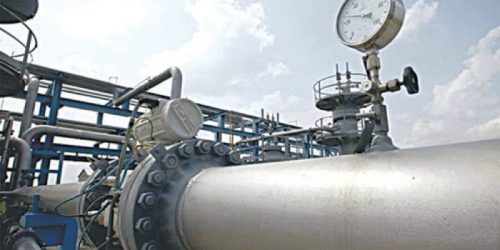The contentious proposal to adopt a ‘weighted average cost of gas’ (WACOG) to reduce the rapid build-up of the circular debt in the gas sector is going to receive a “serious push” soon.
“It’s a political hot potato… I’m told that within a few months there’s going to be a serious push on the political side to get (WACOG) through,” said Tabish Gauhar, who recently stepped down as special assistant to the prime minister on power and petroleum.
WACOG is the pricing mechanism that takes into account the blended costs of both indigenous and imported gas as opposed to the current pricing method, which ring-fences the use of imported fuel. The gas-producing, smaller provinces have been opposing WACOG because they believe it will benefit Punjab at their expense.
Speaking at a recent webinar, Mr Gauhar said the primary reason for the growing inter-corporate debt in the gas sector is the gap between the price at which the fuel is imported and the subsidised rate that a disproportionately large segment of consumers pays for it.
The stock and the flow of the circular debt have been rising for the last three years as the country diverts imported RLNG supplies to the domestic sector every winter. Some of the domestic-sector consumers pay as low as Rs120 a unit compared with the imported price of Rs2,000, he said. “The circular debt went up by Rs100 billion over the last three years just for the domestic sector,” he said.
Similarly, letting the export-oriented industries burn gas at $6.50 per million British thermal units (mmBtu) even though the imported price on a weighted average basis is about $13 adds up to Rs30-35bn every year to the circular debt.
Although the regulator keeps determining revenue requirements for Sui Southern Gas Company Ltd (SSGCL) and Sui Northern Gas Pipelines Ltd (SNGPL) every year, there’s been no increase in gas prices over the last two years. “There’s a big lag and that’s why the circular debt keeps piling up,” he said.
The stock of circular debt
The exact figure for the sector’s circular debt is unavailable because of the delay in the publication of financial accounts by the two gas companies. However, energy
sector analysts use the receivables from the twin Sui companies on the books of Oil and Gas Development Company (OGDC) and Pakistan Petroleum Ltd (PPL) as a proxy to measure the quantum of the circular debt.
Going by this proxy, the circular debt within the gas segment amounted to Rs534.97bn at the end of June 2021, up 5.6 per cent from a year ago.
OGDC’s receivables from SNGPL and SSGCL amounted to Rs273.7bn at the end of June. The corresponding figure on PPL’s balance sheet was Rs261.27bn.
Possible solution
Presenting a “quick fix” for the immediate reduction in the circular debt in the gas sector, Mr Gauhar called for injecting capital through SSGCL and SNGPL into PPL and OGDC, which happen to be the last companies in the circular debt chain.
A partial conversion of their tariff differential into public debt in the form of Pakistan Investment Bonds and Sukuks will enable the twin Sui companies to clear the liabilities of OGDC and PPL.
“Both these companies, directly or indirectly, are almost 80pc owned by the government. Roughly the same amount (of public debt) will flow back to the government in the form of an extraordinary dividend,” he suggested, noting that cleaning up the balance sheets of energy companies will add to the capacity on their balance sheets to borrow money in the future.





